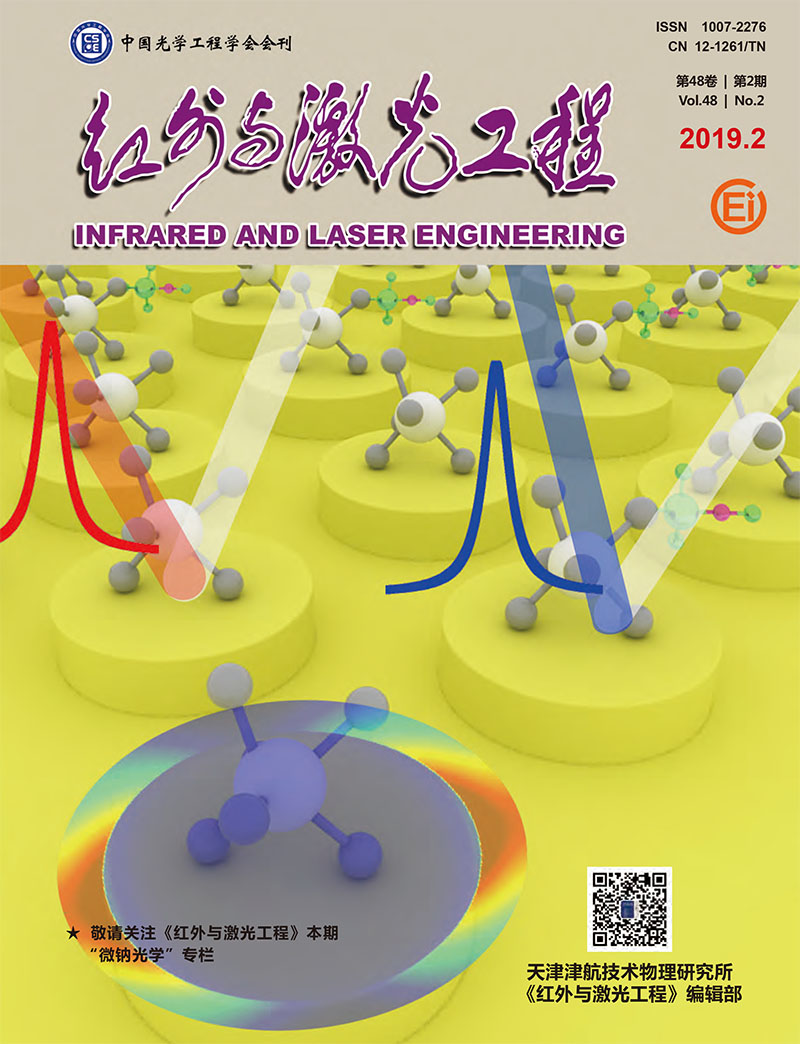Xu Siyu, Zhang Zhaojian, He Xin, Han Yunxin, Zhang Jingjing, Huang Jie, Chen Dingbo, Yang Junbo. Plasmonic triple-wavelength demultiplexing structure based on metal-insulator-metal waveguides side-coupled with nanoring cavities[J]. Infrared and Laser Engineering, 2019, 48(2): 221001-0221001(7). doi: 10.3788/IRLA201948.0221001
| Citation:
|
Xu Siyu, Zhang Zhaojian, He Xin, Han Yunxin, Zhang Jingjing, Huang Jie, Chen Dingbo, Yang Junbo. Plasmonic triple-wavelength demultiplexing structure based on metal-insulator-metal waveguides side-coupled with nanoring cavities[J]. Infrared and Laser Engineering, 2019, 48(2): 221001-0221001(7). doi: 10.3788/IRLA201948.0221001
|
Plasmonic triple-wavelength demultiplexing structure based on metal-insulator-metal waveguides side-coupled with nanoring cavities
- 1.
College of Liberal Arts and Sciences,National University of Defense Technology,Changsha 410073,China
- Received Date: 2018-09-07
- Rev Recd Date:
2018-10-12
- Publish Date:
2019-02-25
-
Abstract
A plasmonic triple-wavelength demultiplexing structure based on metal-insulator-metal waveguides side-coupled with nanoring cavities was proposd by studying theoretically and numerically. The structure consisted of three output channels, each of which was sandwiched by two nanoring cavities. By changing the filling medium of the ring and the relative position of the inner and outer circle, the reflection and transmission spectrum of each channel could be dynamically tunable. Finally, according to the reflection and transmission characteristics of three channels, the demultiplex at three telecommunication wavelengths 1 310 nm, 1 490 nm and 1 550 nm with excellent performance was studied. Temporal coupled-mode (CMT) theory and finite-difference time-domain (FDTD) method are applied to simulation and analysis, and this work can find potential applications for on-chip integrated all-optical circuits.
-
References
|
[1]
|
Neutens P, Dorpe P V, Vlaminck I D, et al. Elec-trical detection of confined gap plasmons in metal-insulator-metal waveg-uides[J]. Nat Photon, 2009, 3:283-286. |
|
[2]
|
Liu H, Gao Y, Zhu B, et al. A T-shaped high resolution plasmonic demultiplexer based on perturbations of two nanoresonators[J]. Opt Commun, 2015, 334:164-169. |
|
[3]
|
Zhu Zhendong, Bai Benfeng, Tan Qiaofeng. Resonance characteristics of surface plasmon elements on laminated cylindrical table[J]. Infrared and Laser Engineering, 2017, 46(9):0934001. (in Chinese) |
|
[4]
|
Zhu Mengjun, Zhang Dawei, Chen Jiannong. Design of broadband near-infrared surface plasmon logic and gate devices[J]. Infrared and Laser Engineering, 2016, 45(3):0320003.(in Chinese) |
|
[5]
|
Dionne J A, Sweatlock L A, Atwater H A. Plasmon slot waveguides:Towards chip-scale propagation with subwavelength-scale localization[J]. Phys Rev B, 2006, 73:035407. |
|
[6]
|
Johnson P B, Christy R W. Optical constants of the noble metals[J]. Phys Rev B, 1972, 6:4370-4379. |
|
[7]
|
Li Q, Wang T, Su Y, et al. Coupled mode theory analysis of mode-splitting in coupled cavity system[J]. Opt Exp, 2010, 18:8367-8382. |
|
[8]
|
Wang G, Lu H, Liu X, et al. Tunable multi-channel wavelength demultiplexer based on MIM plasmonic nanodisk resonators at telecommunication regime[J]. Opt Exp, 2011, 19:3513-3518. |
|
[9]
|
Chremmos I. Magnetic field integral equation analysis of interactionbetween a surface plasmon polariton and a circular dielectric cavity embedded in the metal[J]. J Opt Soc Amer A, 2009, 26:2623-2633. |
|
[10]
|
Hu F, Yi H, Zhou Z. Wavelength demultiplexing structure based on arrayed plasmonic slot cavities[J]. Opt Lett, 2011, 36:1500-1502. |
|
[11]
|
Huang Lingling. Phase control characteristics and applications of the metamaterials based on chiral light field[J]. Infrared and Laser Engineering, 2016, 45(6):0634001. (in Chinese) |
-
-
Proportional views

-









 DownLoad:
DownLoad: